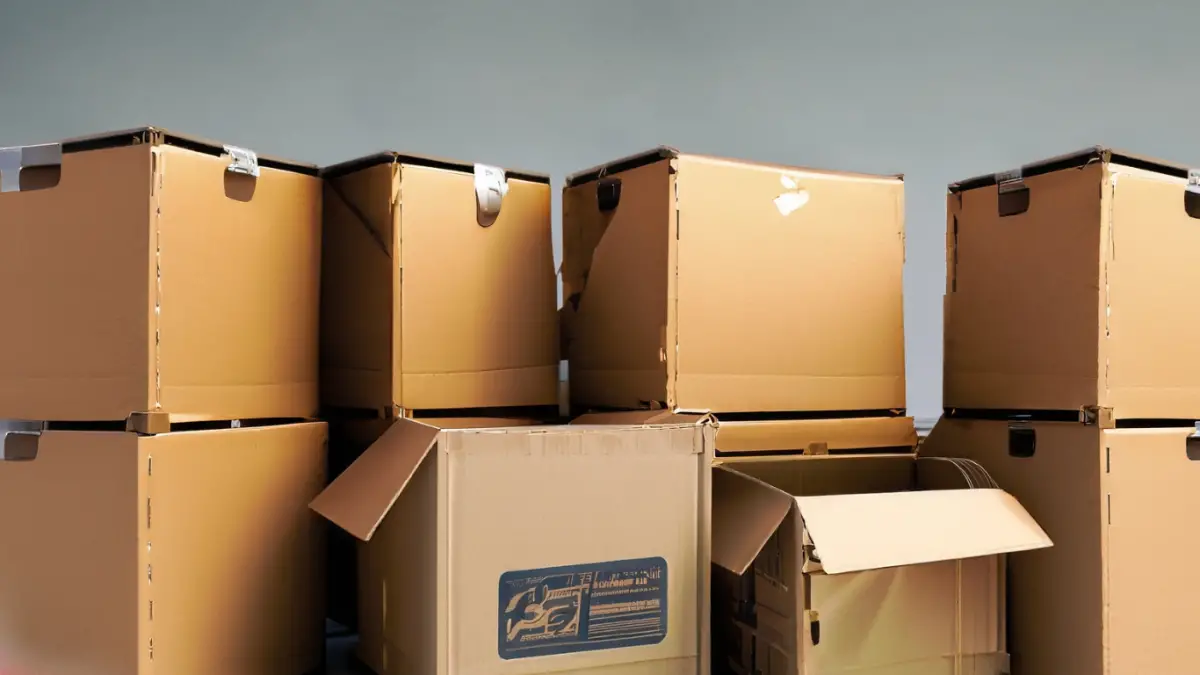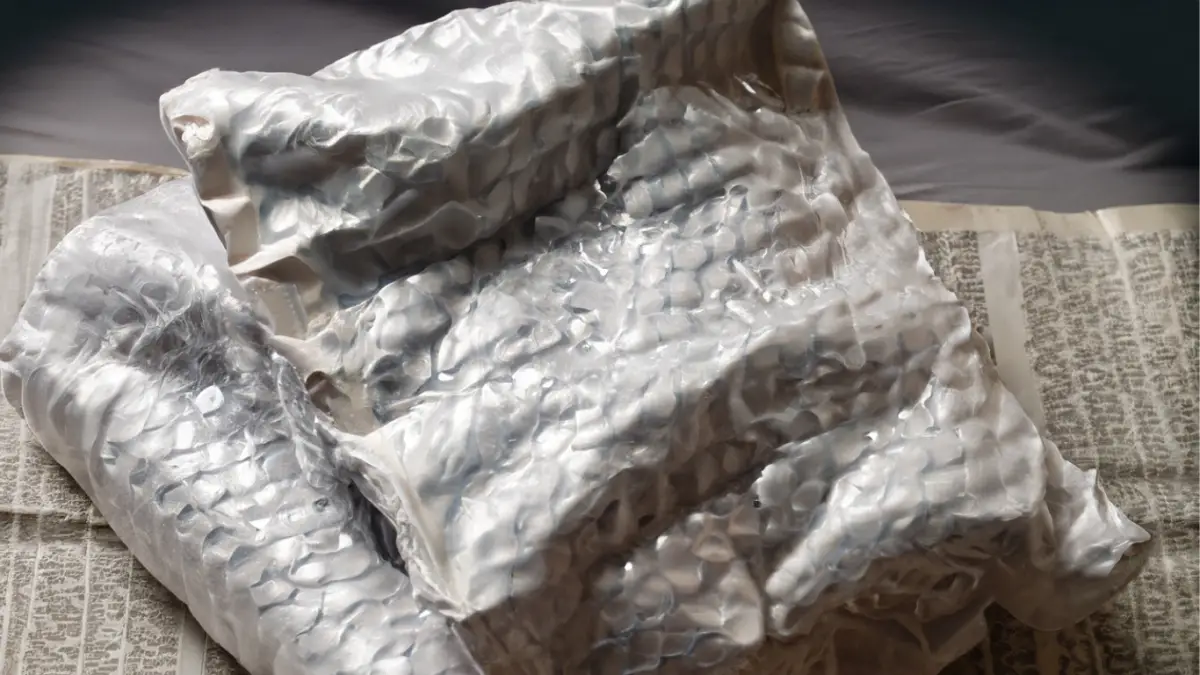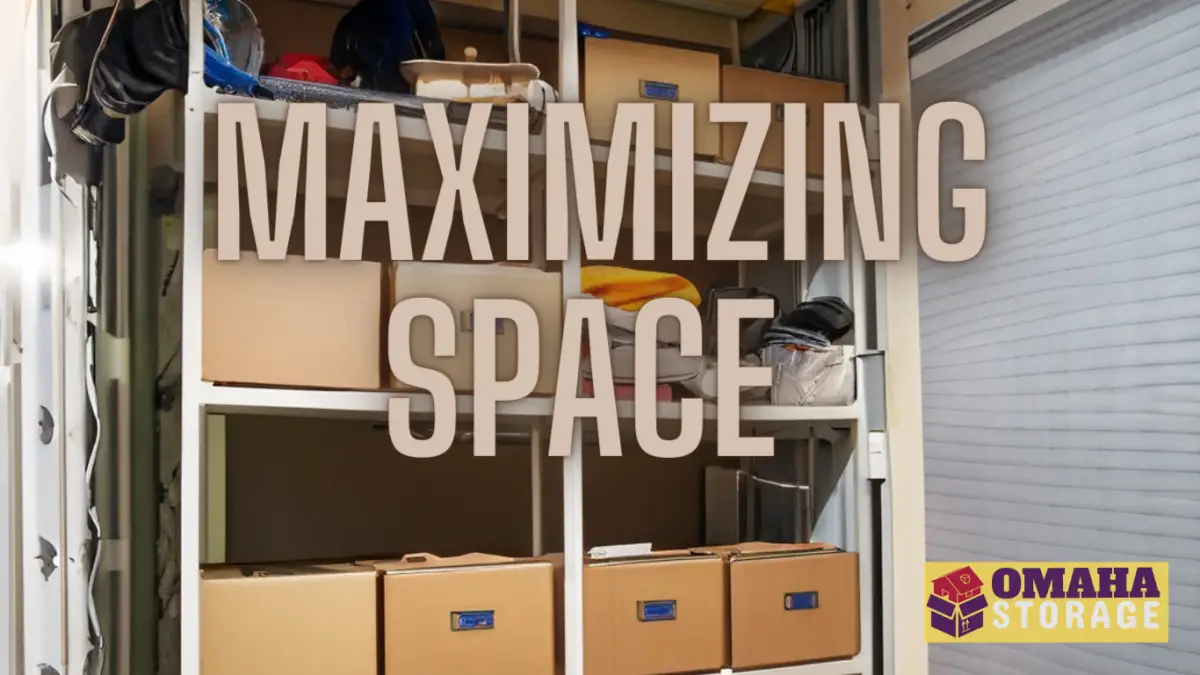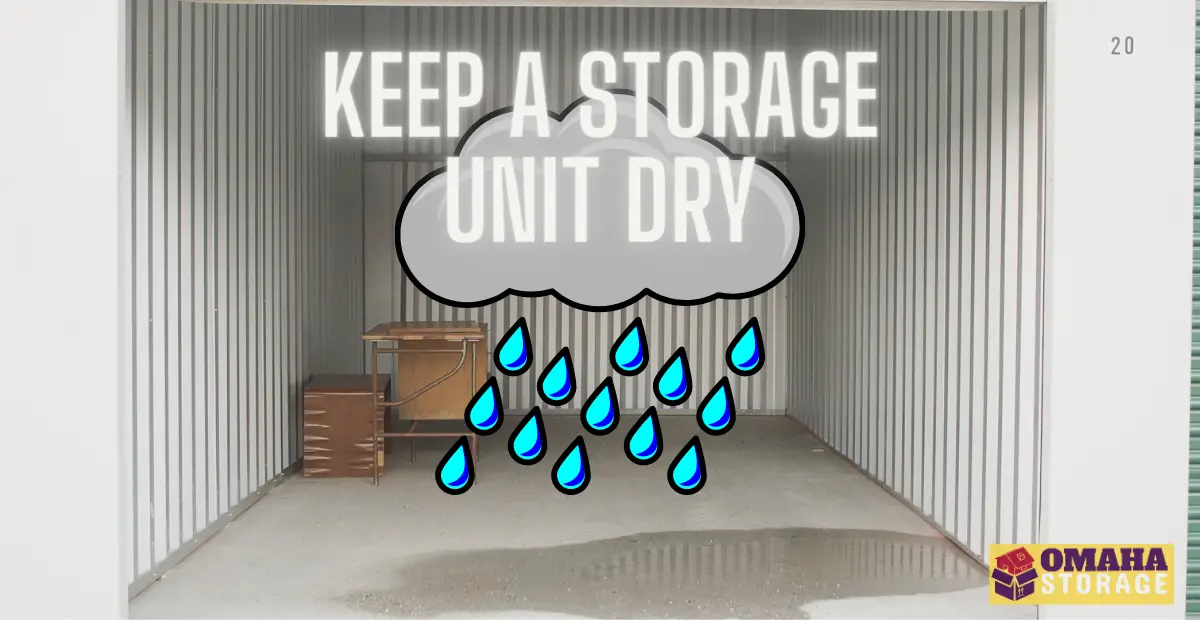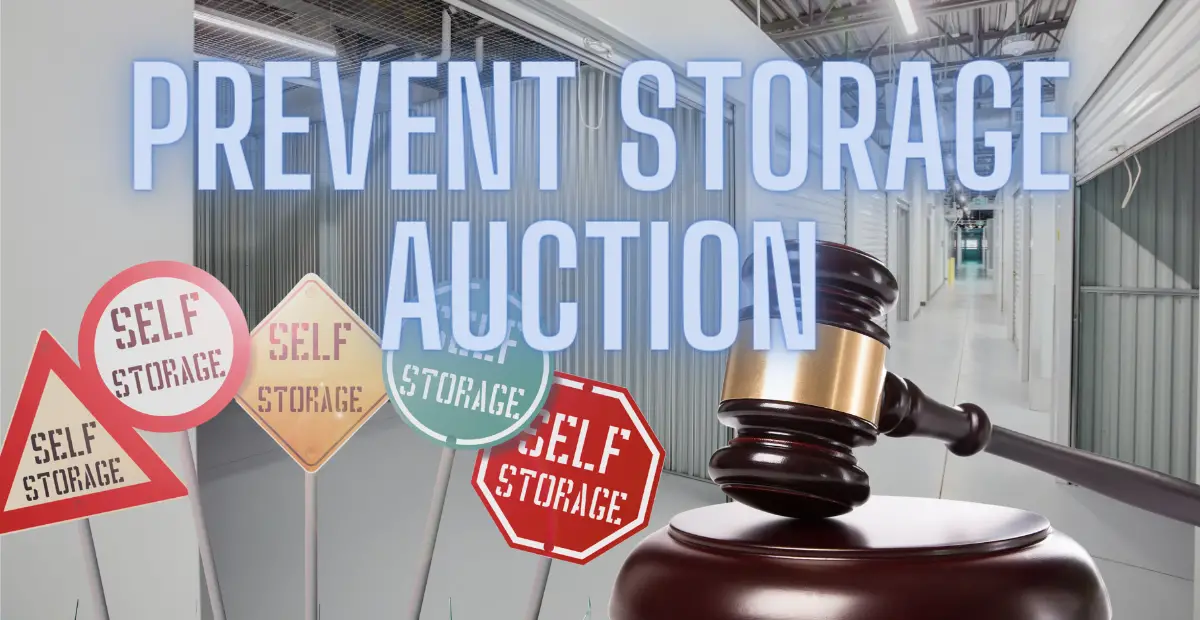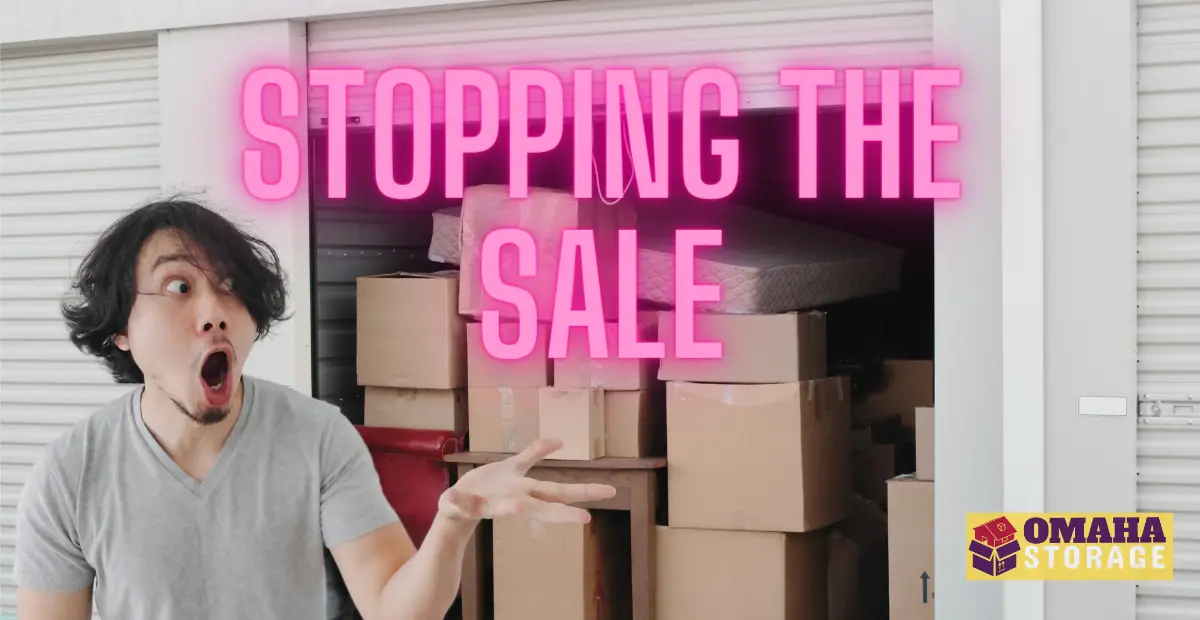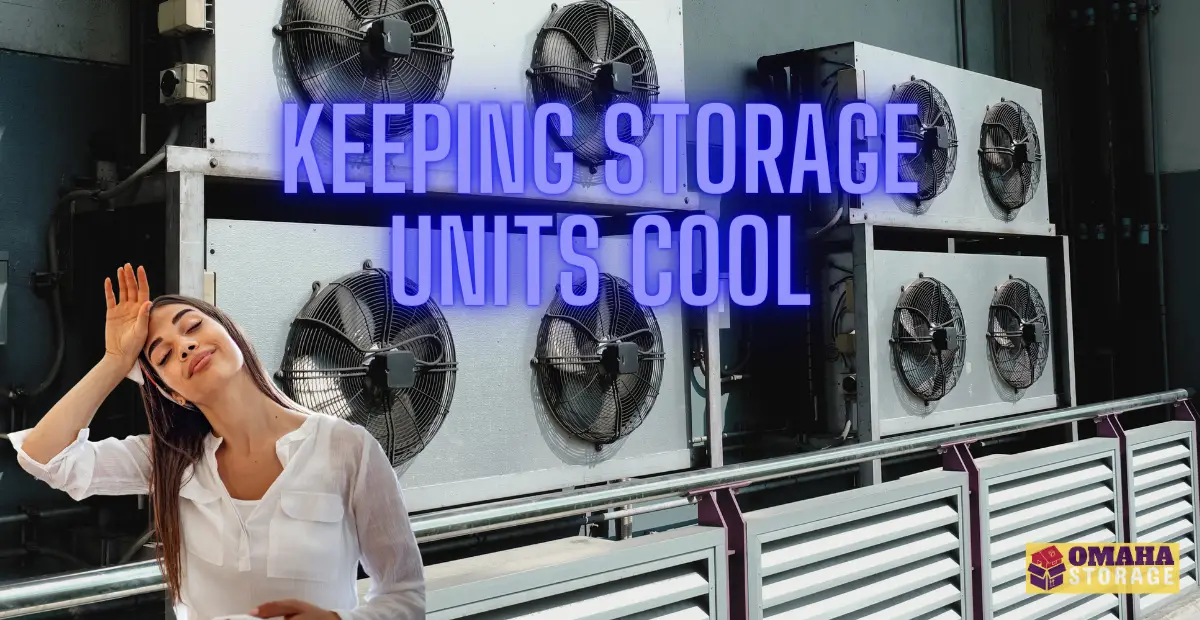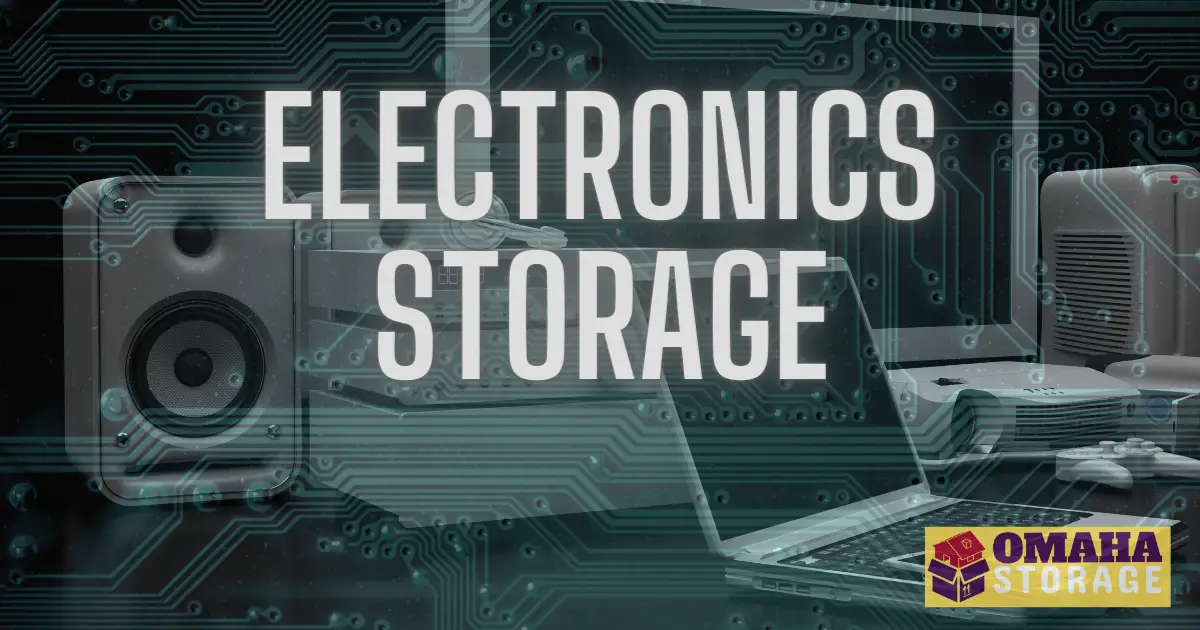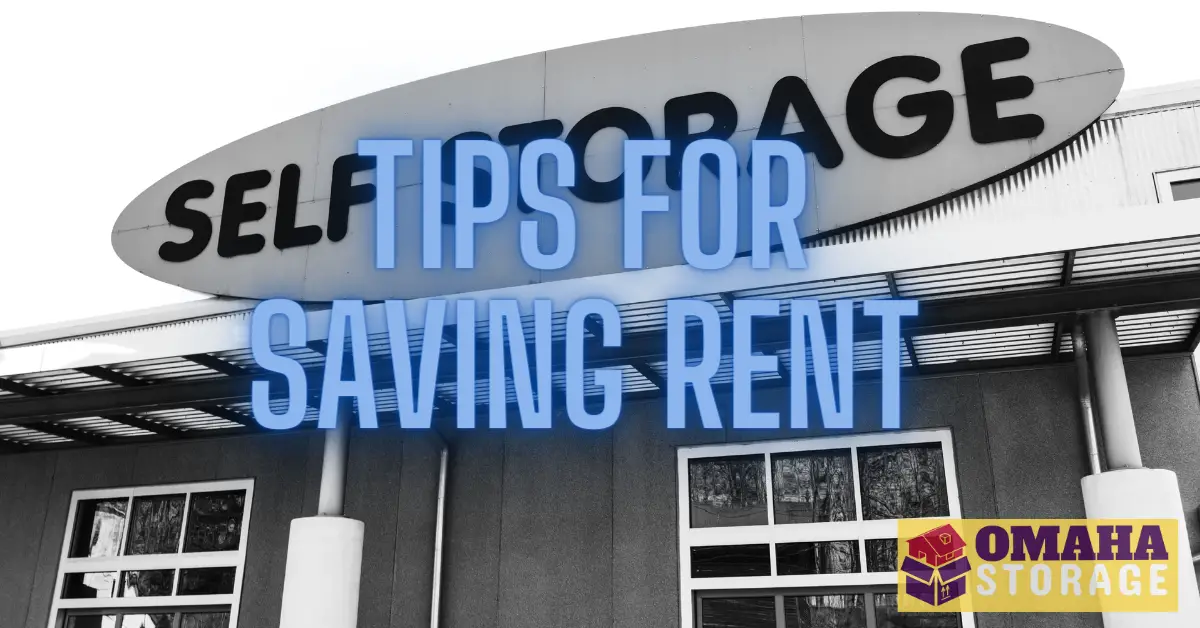We’ve all been there, haven’t we? That moment of dread when we open our storage unit to discover that the summer heat has turned it into an oven.
You’re left with a hot mess — and a heart sinking faster than your beloved vinyl records are warping in the sweltering temperatures.
The good news is, you don’t have to resign to this cruel fate! Today let’s look at keeping your storage unit cool during this current early record breaking summer.
You may not realize it yet, but maintaining the right temperature in these spaces plays such an essential role.
From preserving precious items like grandma’s antique furniture or important documents to protecting more everyday stuff like clothes or electronics; preventing heat damage can save you time, money and countless sentimental heartbreaks.
Don’t sweat it (pun intended) over how complicated this could sound – it’s easier than trying to figure out which remote controls your TV after someone else has used it.
With years of proven expertise in tackling this very issue under my belt and hours upon hours spent on research for optimal solutions – believe me when I say — we’ve got this covered!
So buckle up buttercup as we embark on a journey filled with wisdom and practical tips and served up hotter than a freshly baked cookie from grandma’s kitchen– only without the risk of melting your stuff!
By turning what could be seen as chores into shared chuckles along with expert advice – together we’ll find ways to keep our cherished possessions safe from any unwanted heat waves bar-b-quing our possessions away.
Understanding the Need for Cool Storage Units
When it comes to storage units, temperature matters. It’s not just about comfort — it literally is about preservation.
Whether you’re storing antique furniture, important documents, or everyday items like clothes and electronics, maintaining a cool temperature can prevent heat damage and save you time, money, and heartache.
The Importance of Maintaining a Cool Temperature in Storage Units
Maintaining a cool temperature in your storage unit is crucial for several reasons.
First… preserving the integrity of your belongings. Heat can cause materials to expand and contract, leading to warping, cracking and other damage.
Second… a cool environment can prevent the growth of mold and mildew, which surprisingly will thrive in warm damp conditions.
Finally… certain items — such as electronics and certain types of artwork — require cool conditions to function properly and to maintain their value.
Effects of Excessive Heat on Stored Items
Excessive heat can have a variety of detrimental effects on stored items. For instance, it can cause wooden furniture to warp, crack, or dry out.
Paper documents and photographs can yellow and become brittle and shatter without you even being there.
Electronics can malfunction or become damaged, and certain types of artwork can fade or deteriorate.
Then there’s items stored in plastic containers where the heat causes the plastic to release chemicals, which can then be absorbed by the items inside.
Selecting the Right Kind of Storage Unit
Choosing the right kind of storage unit is the first step in ensuring your items are protected from excessive heat. This involves deciding between indoor and outdoor units, as well as climate-controlled versus non-climate-controlled units.
Deciding between Indoor and Outdoor Storage Units
While outdoor storage units can provide easy drive-up access, they are also more exposed to the elements, including heat.
On the other hand, indoor storage units are typically housed in a larger building, providing an extra layer of protection from extreme temperatures. However, accessibility might be slightly less convenient compared to outdoor units.
Evaluating Climate Controlled Units versus Non-Climate Control Units
Climate-controlled units maintain a consistent temperature and humidity level year-round, making them ideal for storing heat-sensitive items. Your storage center is expert on maintaining a consistent level and has had lots of practice here.
Non-climate-controlled units, while typically cheaper, do not offer this level of protection and can be subject to temperature extremes.
Strategies to Keep a Storage Unit Cool
Once you’ve selected the right kind of storage unit, there are several strategies you can employ to keep it cool. These include using insulation materials, ensuring effective ventilation, minimizing direct sunlight exposure and more.
Making use of Insulation Materials
Insulation materials can help to regulate the temperature inside your storage unit by reducing heat transfer. This can be particularly effective for outdoor storage units that are exposed to direct sunlight.
Tips for Effectively Insulating your Storage Unit
When insulating your storage unit, focus on the walls, roof, and door — as these areas are most prone to heat transfer. Reflective insulation materials, such as radiant barriers, can be particularly effective as they reflect heat away from the unit.
Different Types of Insulation Materials Suitable for a storage unit
There are several types of insulation materials that are suitable for a storage unit. These include fiberglass insulation, foam board insulation, and reflective insulation.
Each has its own pros and cons, so it’s important to choose the one that best suits your needs.
Radiant Barriers: What They are and How They Help in Cooling Down Your Space
Radiant barriers are a type of reflective insulation that can help to keep your storage unit cool. They work by reflecting radiant heat away from the unit, preventing it from being absorbed and causing the temperature to rise.
The Pros and Cons of using Radiant barriers
Radiant barriers are highly effective at reducing heat transfer, making them a great option for keeping your storage unit cool. However, they can be more expensive than other types of insulation and may require professional installation.
Installation Process
Installing radiant barriers involves attaching the material to the walls, roof, and door of the storage unit. This can be done using adhesive or fasteners, depending on the specific product and the structure of the unit.
The Impact Of Effective Ventilation
Effective ventilation can help to regulate the temperature in your storage unit by allowing hot air to escape and fresh air to circulate.
How Proper Aeration Contributes to a Cool Environment
Proper aeration can contribute to a cool environment by reducing humidity levels and preventing the buildup of hot air.
This can be achieved through natural ventilation, like opening windows or doors — or through mechanical ventilation, such as installing fans or vents.
Working Principle Of Different Ventilation Systems That Can Be Applied In Managing The Temperature
There are several different ventilation systems that can be applied to manage the temperature in a storage unit.
These include exhaust fans, which remove hot air from the unit; intake vents, which allow fresh air to enter; and air conditioning units, which cool the air and remove humidity.
Keeping Electronics at Minimal Use
Electronics can generate a significant amount of heat, so it’s important to keep their use to a minimum in your storage unit.
If you do need to use electronics, make sure they are properly ventilated and consider using a fan or air conditioner to help keep the temperaturedown.
Disadvantages and Care Needed When Dealing with Electronic Devices
While electronics can be necessary, they also come with some disadvantages. They can generate heat, which can increase the temperature of your storage unit. Additionally, they can be sensitive to high temperatures themselves, which can lead to malfunctions or damage.
Therefore, it’s important to take care when dealing with electronic devices in your storage unit. Ensure they are properly ventilated, keep them out of direct sunlight, and consider using a fan or air conditioner to help keep the temperature down.
Taking Advantage Of Natural Light
Natural light can be a great way to illuminate your storage unit without generating excess heat. Consider installing skylights or using a unit with windows to take advantage of natural light.
However, be mindful of direct sunlight, which can increase the temperature of your unit.
Minimizing Direct Sunlight Exposure
Isn’t it crazy how hot your car can get inside when parked out in direct sunlight? It doesn’t even have to be an especially hot day to get super hot inside your car. But when you park in the shade, it does make a difference.
While natural light can be beneficial, direct sunlight can cause your storage unit to heat up quickly. Consider the placement of your unit and the direction of the sun when choosing a unit.
If possible, opt for a unit that doesn’t receive direct sunlight during the hottest parts of the day.
Using Portable Air Conditioners or Fans
Portable air conditioners or fans can be a great way to keep your storage unit cool. They can be easily moved around to target specific areas, and they can be used as needed, helping to save on energy costs.
Process to properly set up either an air conditioning unit or fans
When setting up an air conditioning unit or fans, it’s important to consider the layout of your storage unit. Place the unit or fan in a location where it can effectively cool the entire space.
Make sure it’s not blocked by any items, and ensure there’s a power source nearby.
Using Solar Reflective Paints
Solar reflective paints can be a great way to reduce the heat in your storage unit. These paints reflect the sun’s rays, preventing them from heating up the surface they’re applied to.
Consider using these paints on the roof and walls of your unit to help keep it cool.
Planning and Arranging Items Strategically inside the Unit
The way you arrange your items can also affect the temperature of your storage unit. Try to create a layout that allows for good air circulation.
Avoid stacking items too closely together, and consider using shelving units to keep items off the floor and allow for better airflow.
Understanding what should go high, and what one should stay low
When arranging your items, consider their sensitivity to heat. Items that are more sensitive to heat should be placed lower to the ground where it’s typically cooler, while less sensitive items can be stored higher up.
Regular Assessment And Maintenance Checks
Regularly checking your storage unit can help you identify any issues before they become major problems. Look for signs of heat damage, check the functionality of your cooling systems, and make sure your insulation and ventilation are working effectively.
What part to inspect regularly?
Regularly inspect your insulation, ventilation systems, and any cooling devices you’re using. Also, check your items for signs of heat damage, such as warping, fading, or melting.
When is the right time to call in experts?
If you notice any major issues, such as a malfunctioning air conditioner or significant heat damage to your items, it’s time to call in the experts. A professional can help diagnose and fix the problem, preventing further damage.
Utilize Dehumidifiers to regulate moisture levels
Dehumidifiers can be a great tool to regulate moisture levels in your storage unit. High humidity can lead to mold and mildew, which can damage your items. A dehumidifier can help maintain a safe humidity level, protecting your belongings.
Benefits derived from maintaining appropriate humidity levels
Maintaining appropriate humidity levels can protect your items from damage caused by mold, mildew, and moisture. It can also prevent the warping , deterioration and expansion/contraction of materials — such as wood and paper — that can occur in high humidity.
Evaluating Digital Thermal Solutions
Digital thermal solutions, such as smart thermostats or temperature monitors, can help you keep a close eye on the temperature in your storage unit.
These devices can provide real-time temperature readings, and some can even send alerts to your phone if the temperature goes outside a set range.
Optimization with Smart Home Technology
Smart home technology can be a great tool for managing the temperature in your storage unit. Smart thermostats can be programmed to maintain a specific temperature, and smart plugs can be used to control fans or air conditioners remotely.
Apps that could help monitor temperatures remotely
There are several apps available that can help you monitor the temperature in your storage unit remotely. These include smart home apps, like Nest or Ecobee, as well as standalone temperature monitoring apps.
Energy efficient practices within your storage units
Energy-efficient practices can help keep your storage unit cool while also saving you money on energy costs. These practices might include using energy-efficient cooling devices, like Energy Star-rated air conditioners or fans, and implementing energy-saving strategies, like using natural light instead of artificial light.
Easy tips that can save power without compromising cooling requirements
There are several easy tips that can help you save power without compromising your cooling requirements. These include turning off cooling devices when they’re not needed, using natural light instead of artificial light, and insulating your unit to reduce the need for cooling.
Efficient Power Supply Options For Cooling Mechanisms
When it comes to powering your cooling mechanisms, there are several efficient options to consider. These might include solar power, which can be a great renewable energy source for powering fans or small air conditioners, or using energy-efficient devices that use less power.
Steps in setting up solar panels as an alternative power source
Setting up solar panels as an alternative power source involves several steps. First, you’ll need to choose the right solar panels for your needs. Then, you’ll need to install them in a location where they’ll get plenty of sunlight.
Finally, you’ll need to connect them to your cooling devices.
Standby generators: how they work during sudden outages?
I’ve seen it happen several times… the heat outside is so extreme that a transformer at the power station spontaneously burns up and power is cut off for an hour — or longer.
If you have a climate controlled unit and the power goes off, yo might as well just have a standard uncontrolled unit.
That’s why standby generators make sense.
Standby generators can be a great backup power source during sudden outages. They work by automatically turning on when they detect a power outage, ensuring your cooling devices continue to run and keep your storage unit cool.
